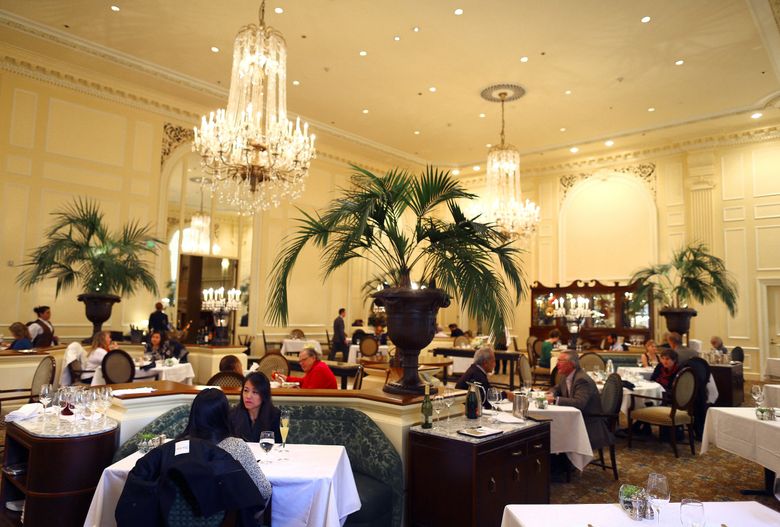Savor Authentic Eastern Cuisine With a Pan-Asian Twist for a Cooking Experience
Embarking on a cooking trip through genuine Oriental cuisine, enhanced with a Pan-Asian spin, uses an unique possibility to check out the abundant tapestry of flavors that define the region's varied cooking practices. As you contemplate these tempting dishes, think about the cultural narratives and historical impacts that shape them, each bite providing a tale waiting to be uncovered. Romantic restaurants Islamabad.

Discovering Pan-Asian Tastes
In the world of international gastronomy, Pan-Asian food stands apart for its amazing diversity and the unified interaction of flavors from different Eastern cultures. This culinary approach commemorates the abundant practices and unique active ingredients found across the continent, creating a tapestry of tastes that is both rewarding and fascinating. Trick to Pan-Asian cuisine is its capability to stabilize contrasting tastes-- wonderful, salted, spicy, and sour-- while highlighting the quality and high quality of each ingredient.
From the umami-rich soy sauce of Japan to the intense chili peppers of Thailand, Pan-Asian food offers a considerable combination of tastes. These elements are commonly integrated in innovative methods, boosting recipes with layers of intricacy. For example, the usage of aromatic herbs such as lemongrass and cilantro, usual in Vietnamese and Thai cuisine, adds a refreshing illumination to dishes, while the incorporation of coconut milk provides a velvety, abundant structure.
The focus on fresh fruit and vegetables and fragrant flavors ensures that each meal is not only a banquet for the palate but additionally for the detects. Pan-Asian food invites restaurants to get started on a culinary journey, exploring the substantial and varied landscapes of Asian gastronomy with every bite.
Fusion Dishes to Attempt
While Pan-Asian food is celebrated for its typical tastes, the contemporary culinary landscape is progressively accepting combination recipes that blend these traditional aspects with impacts from other areas. This innovative strategy not only honors the abundant heritage of Eastern cookeries yet also presents unique taste experiences that attract modern tastes buds.
A prime instance of such a fusion meal is the Korean-Mexican taco, where seasoned bulgogi beef is wrapped in a warm tortilla, covered with kimchi and a spicy gochujang-infused salsa. This combination weds the vibrant, mouthwatering tastes of Korea with the dynamic, fresh components of Mexican cuisine. In a similar way, sushi burritos have gotten popularity, joining together the delicate virtuosity of Japanese sushi with the hearty, hand-held convenience of a burrito, typically featuring combination ingredients like tempura shrimp and avocado with a drizzle of wasabi mayo.
One more significant recipe is Thai curry ramen, which instills the velvety, fragrant flavors of Thai curry right into the comforting brew of standard Japanese ramen, creating a harmonious blend that entices the detects. These fusion recipes prolong beyond plain novelty; they represent a culinary dialogue between cultures, motivating expedition and innovation worldwide of Pan-Asian cuisine.
Necessary Ingredients and Spices
To really appreciate Pan-Asian food, one must understand the crucial components and spices that develop its structure. This diverse culinary style draws from a rich tapestry of Oriental practices, using a harmonious blend of flavors and appearances.
Fragrant aspects are essential, with ginger, lemongrass, and garlic being ubiquitous throughout different Pan-Asian recipes. These active ingredients supply a fragrant base that boosts the complexity of tastes. Flavors such as star anise, cardamom, and cinnamon present warmth and personality, echoing influences from regions like China and India.

Food Preparation Strategies and Tips
Mastering the art of Pan-Asian food requires experience with its distinctive cooking strategies, each adding to the dynamic tapestry of flavors this cooking practice is commemorated for. Central to these techniques is the stir-fry, a quick food preparation strategy that preserves the nutritional integrity and brilliant shades of active ingredients. Making use of a frying pan, the stir-fry approach permits even heat distribution, vital for attaining the particular appearance and taste equilibrium of Pan-Asian recipes.
An additional basic technique is steaming, especially common in Chinese food. This mild method maintains the natural flavors and nutrients of components, making it excellent for seafood and vegetables. Dumplings, a precious staple, usually take advantage of steaming, leading to soft, succulent appearances.
Cooking, additionally essential, presents smoky depths to meals such as Oriental bulgogi or Japanese yakitori (best asian restaurant Islamabad). This method commonly includes marinading components, enabling flavors to penetrate deeply before food preparation over an open fire or warmer
Lastly, mastering the art of balancing flavors-- wonderful, sour, salted, bitter, and umami-- is vital. Effectively layering these components can boost a recipe from average to extraordinary, supplying a facility and satisfying cooking experience that symbolizes the essence of Pan-Asian food.
Dining Experiences Worldwide
Around the world, Pan-Asian cuisine uses an unparalleled eating experience, commemorated for its rich tapestry of tastes and vibrant discussions. This culinary sensation has actually transcended social limits, recording the hearts and tastes buds of food fanatics worldwide. In worldwide cities like New York, London, and Sydney, Pan-Asian dining establishments serve as fusions where culinary customs from Thailand, Japan, China, and past assemble, giving diners with a diverse mix of recipes that highlight the region's variety.
The worldwide charm of Pan-Asian food lies in its ability to supply both authenticity and innovation. Chefs skillfully wed conventional ingredients such as japanese steakhouse near me lemongrass, soy sauce, and miso with modern strategies, resulting in meals that are both acquainted and refreshingly new. This combination permits restaurants to get started on a culinary trip that values heritage while welcoming modernity.
Furthermore, dining experiences are raised with attentively created environments that reflect the values of Pan-Asian aesthetics. From site web minimalist Japanese-inspired insides to vibrant Thai-themed spaces, each restaurant uses a special atmosphere that matches the culinary offerings. Because of this, clients are not simply taking in a dish however partaking in a social experience, making Pan-Asian eating an absolutely global phenomenon.
Verdict
The expedition of Pan-Asian cuisine offers an extensive understanding of the detailed interaction of flavors and cooking practices across Asia. By embracing fusion recipes such as Thai curry ramen and sushi burritos, the cooking journey not just highlights the flexibility of standard components but additionally showcases ingenious modern techniques. This gastronomic journey, enhanced by cooking techniques and vital spices, provides an unique possibility to appreciate the multiculturalism and culinary artistry that specify Pan-Asian cuisine on a global range.
Embarking on a cooking journey through genuine Oriental food, improved with a Pan-Asian twist, uses a distinct opportunity to discover the rich tapestry of tastes that specify the region's varied cooking customs.In the realm of international gastronomy, Pan-Asian cuisine stands out for its remarkable variety and the harmonious interaction of flavors from various Oriental societies. Trick to Pan-Asian cuisine is its capacity to balance different flavors-- sweet, salted, spicy, and sour-- while highlighting the freshness and top quality of each component.
